Sorolla's Guide to Valencia
Saturday, February 1, 2025
Joaquín Sorolla is one of the great masters of 19th-century Spanish painting. He became internationally famous with his paintings of Mediterranean scenes, full of light and happiness. This route around his hometown, Valencia, covers the places connected to his life and works. From the neighbourhood where he grew up, to the places that inspired him, including the museums that display his art.
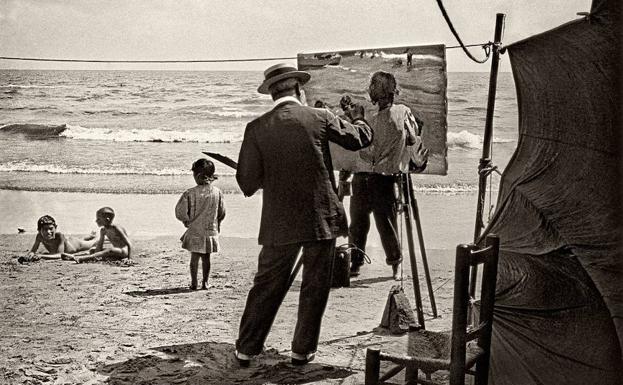
The Sorolla Route is a cultural proposal that explores the history and works of the Valencian painter Joaquín Sorolla. The route covers about thirty spots around the city of Valencia which are connected to some extent to the artist. The urban route we present includes some of these important places. It can be covered on foot in a day, although you can also take the metro or tram to some of the places, for more convenience.
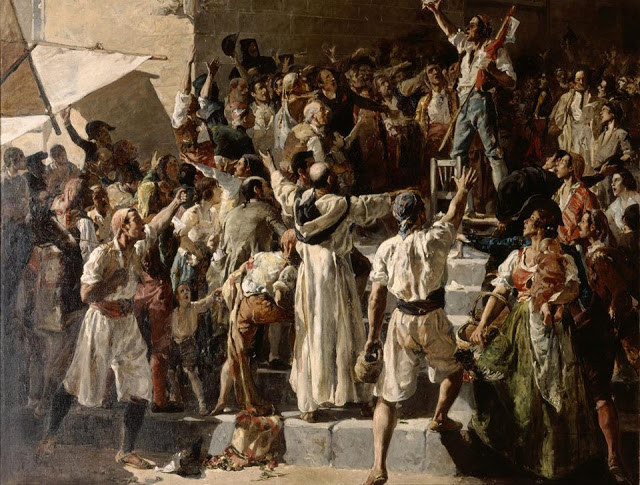
We start the route at the artist's birthplace, situated at 8, Calle de las Mantas street, which is marked by a commemorative plaque. Close by we'll find the Church of Santa Catalina, where he was baptised, and the Church of San Martín, where he married Clotilde García. Then we'll go to the Silk Exchange, as its steps are the setting in the artist's painting "The Cry of the Palleter" (1884). Then, we head towards the Fine Arts Club, to which the artist used to belong. It is currently situated in a Gothic palace on Calle Cadirers street.
The next stop is the Cathedral, a building that appears in some of Sorolla's earlier works. If we walk down Carrer de San Vicente Mártir street, we'll get to the Town Hall, which houses an art collection that includes some of Sorolla's paintings, such as "My Family" (1901). We continue on Calle de las Barcas street towards the section known as that of the Painter Sorolla: the Artisans' School of Valencia used to be situated here. The artist belonged to this school between 1876 and 1878. The centre is currently situated on Avenida del Reino de Valencia and conserves an oil painting by Sorolla and some of the drawings he made while he was a student.
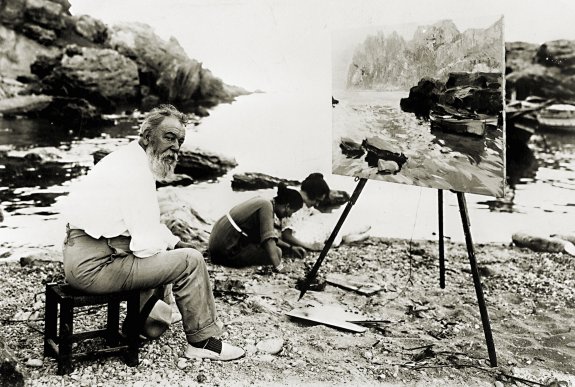
The route continues by crossing the Turia River, over the Puente de la Exposición bridge, popularly known as "La Peineta" ("ornamental comb"). Designed by architect Santiago Calatrava, it will take us to Calle Galicia street, where we'll find the Palacio de la Exposición palace, which held the Regional Valencian Exhibition in 1909, which showcased artworks by several artists, including Sorolla.
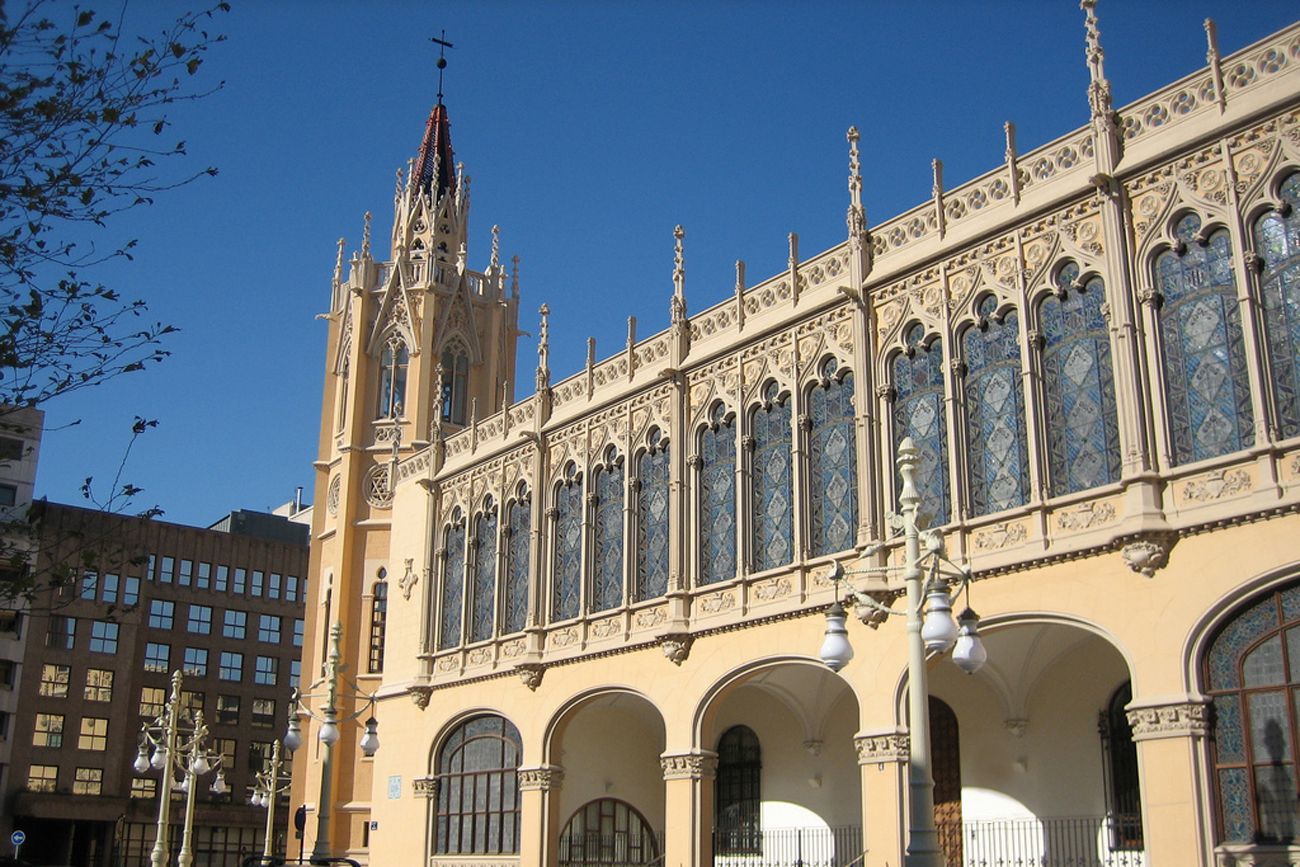
Then we walk down Paseo de la Alameda to get to the Valencia Museum of Fine Arts. Its collection includes around 50 of Sorolla's paintings. After that we cross the Turia River again towards El Carmen Centre. It is an old 13th-century convent which used to house the School of Fine Arts, where Sorolla studied between 1878 and 1887. Today it is an exhibition centre and holds the Joaquín Sorolla Research and Study Institute. The House-Museum of Benlliure is close by, dedicated to the Benlliure family of artists, intimately connected to the Valencian artist.
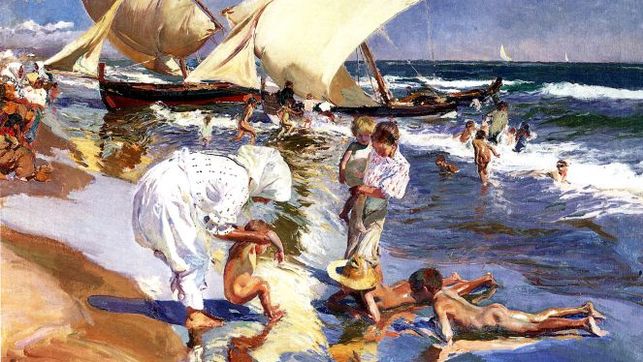
The route continues towards La Malvarrosa beach, which appears in many of Sorolla's paintings. On the coast we'll also be able to discover the house of another of his friends - the House-Museum of Vicente Blasco Ibáñez. We'll also see two places whose activity was an inspiration to the artist for several of his works: the Hospital Valencia al mar (old San Juan de Dios shelter) and the Casa dels bous house. If we walk down the promenade we'll get to Valencia's monument to Sorolla, situated in Plaza de la Armada Española square.
The urban route ends at the General Cemetery of Valencia, at the family pantheon where the artist is buried. Nevertheless, we can enjoy more of his paintings in the Lladró Museum, six kilometres from the city, in Tavernes Blanques.
 2
Like
Published at 12:56 AM Comments (0)
2
Like
Published at 12:56 AM Comments (0)
The Spanish Colonisation of the Americas
Saturday, January 25, 2025
The Spanish colonisation of the Americas signifies one of the most impactful periods in global history, stretching from the late 15th century to the early 19th century. This era laid the groundwork for the modern Americas and widespread cultural shifts that resonate to this day. Below, we will explore the journey, challenges, and the legacy left by Spanish explorers and settlers.
_-_Pizarro_Seizing_the_Inca_of_Peru_-_Google_Art_Project.jpg)
The Dawn of Discovery
The Spanish colonisation commenced in 1493 on the Caribbean island of Hispaniola, now divided into Haiti and the Dominican Republic. This followed the monumental voyage of Christopher Columbus in 1492, a Genoese mariner licensed by Queen Isabella I of Castile. While the initial discoveries were islands in the Caribbean, the Spanish swiftly expanded their reach across North and South America.
One can attribute Spain's drive to expand to a combination of economic interests, religious zeal, and the ambition to bolster the Spanish crown's prestige and authority. The lure of vast territories teeming with resources, and the prospect of converting indigenous inhabitants to Christianity, motivated Spaniards to journey across the Atlantic.
Mechanisms of Control
The Crown of Castile maintained jurisdiction over these new overseas endeavours until the loss of their final territories in 1898. The Spanish Empire's expansion saw the imposition of civil and religious structures to administer these vast lands effectively.
Spanish settlers, mainly concentrated in areas with dense indigenous populations and abundant resources, introduced new governance systems and sought economic gains through the extraction of resources. Additionally, Spanish rulers perceived the local populace as both human resources and potential converts to Christianity. This belief system spurred aggressive and sometimes forceful measures to integrate indigenous peoples into the Catholic faith.
Conflicting Claims and Methods of Administration
Spain's claims over the newly discovered lands enveloped almost the entirety of what was then known as the New World, including the Caribbean and significant swathes of North and South America. Notably, Brazil fell under Portuguese control as a result of the Treaty of Tordesillas. European competitors, notably the English, French, and Dutch, also staked claims in the Spanish-designated territories, often leading to territorial disputes.
Though modern narratives commonly refer to these areas as "colonies," the term was not in widespread use until the latter half of the 18th century. Present-day scholars continue to debate the appropriate terminology to describe this period, reflecting the complexity and multifaceted nature of these historical events.
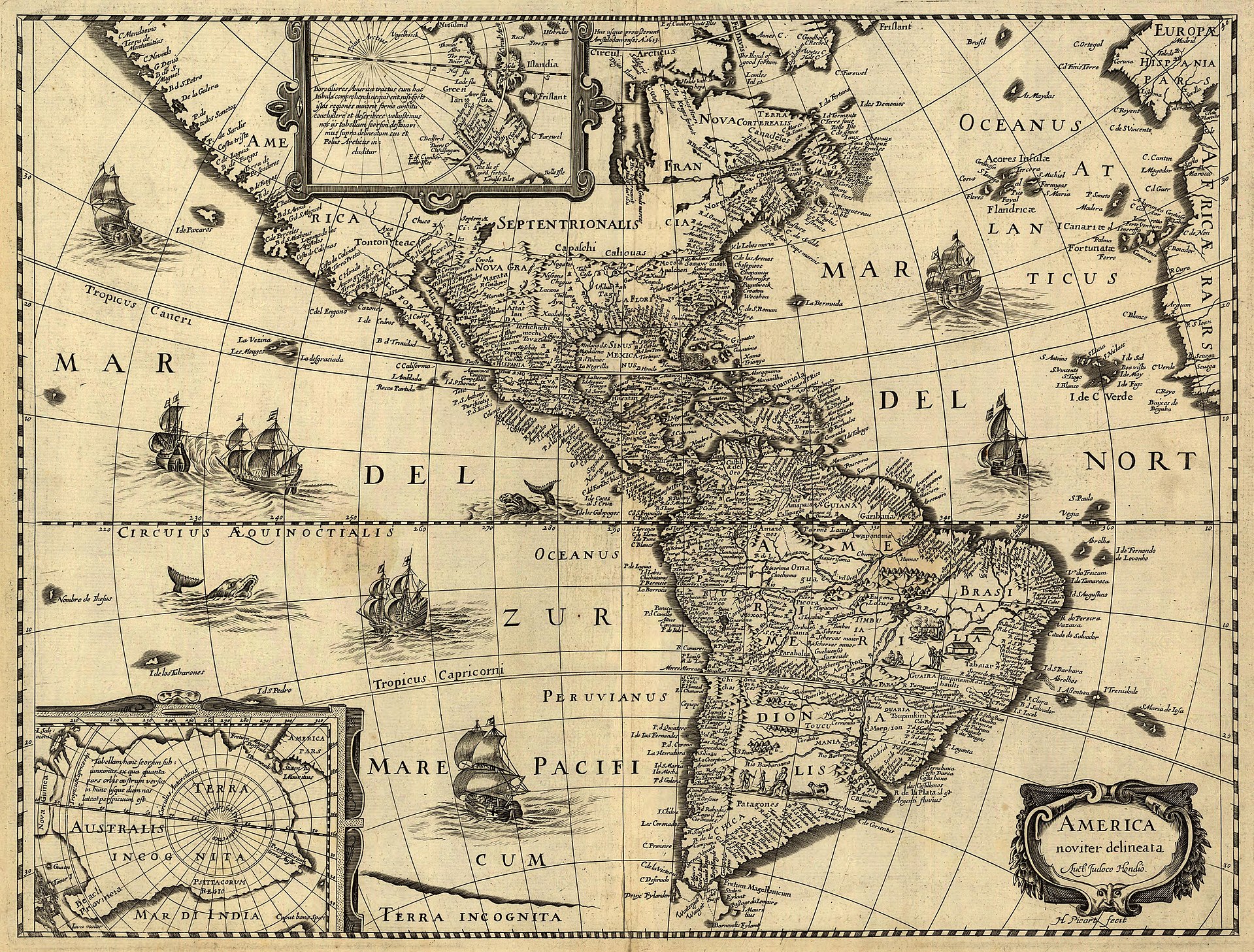
Population Dynamics and Labour Practices
From 1492 to 1832, approximately 1.86 million Spaniards emigrated to the Americas, and an additional 3.5 million followed in the post-independence era between 1850 and 1950. In the 16th century, around 250,000 Spaniards relocated, with the rate of immigration peaking during the 18th century, encouraged by the Bourbon dynasty.
Tragically, the indigenous population experienced a catastrophic decline of about 80% within the first 150 years following European contact. The primary cause was the spread of infectious diseases, to which indigenous peoples had no immunity. Additionally, forced labour and slavery, exploitation for resource extraction, and essential resettlements, contributed significantly to the population decrease.
Attempts at Protection and the Rise of a Mixed-Race Society
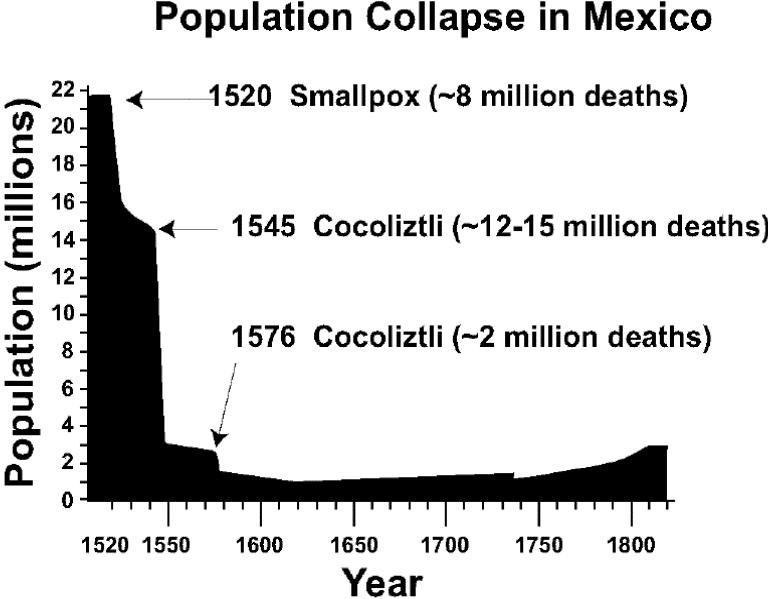
Alarmed by the drastic population decline, the Spanish crown enacted laws designed to safeguard indigenous peoples from excessive exploitation. As the indigenous labour force dwindled, Europeans imported enslaved Africans to work in the early Caribbean settlements. Over time, intermingling of European, indigenous, and African populations gave rise to a new, mixed-race group known as the casta.
Wars of Independence and the End of Overarching Spanish Rule
The early 19th century saw widespread independence movements across Spanish America, leading to the emergence of several independent nations. Despite these seismic political shifts, Spain retained control over Cuba, Puerto Rico, and the Philippines until the Spanish-American War of 1898, which resulted in the loss of these final holdings.
Imperial Expansion
The expansion of the Spanish Empire began under the Catholic Monarchs Isabella I of Castile and Ferdinand II of Aragon. Aside from the New World, their conquests within the Iberian Peninsula also included the successful campaign to capture the Emirate of Granada in 1492, concluding the Christian Reconquista.
Key Figures: Hernán Cortés and Francisco Pizarro
The names Hernán Cortés and Francisco Pizarro are etched in history due to their roles in conquering the powerful Aztec and Inca empires, respectively. Cortés's strategic alliances, especially with the Tlaxcala city-state, proved pivotal in his campaigns. Spanish conquerors often leveraged indigenous rivalries to achieve their aims, with varying degrees of success and often severe consequences for the local populace.
Settlement Patterns and Cultural Impacts
Early Spanish settlements in the Caribbean set influential patterns for later colonial developments. Despite Columbus's steadfast belief that he had reached Asia, the Spanish soon understood the depth of their discovery, referring to their territories as "The Indies." The Spanish acknowledged and harnessed the fragmented political landscapes in regions like Mexico and Peru to establish control, whereas in the Caribbean, other strategies were needed due to the lack of large, integrated indigenous civilizations.
The Spanish colonisation left a lasting cultural legacy, evident in language, religion, and cultural traditions still prevalent in the Americas today. Moreover, it catalysed the spread of European culture and brought lasting changes—both beneficial and detrimental—to the social fabric of the Americas.
The Spanish colonisation of the Americas was a complex and multifaceted historical period marked by exploration, conquest, exploitation, and significant cultural interchange. From the momentous voyage of Columbus to the vast, influential empire administered by the Spanish Crown, this era reshaped the global historical landscape and left an indelible mark that continues to influence the Americas. The stories of heroism, tragedy, and cultural amalgamation from this period remain subjects of study and reflection, enhancing our understanding of the transformative power of historical encounters.
 3
Like
Published at 1:16 AM Comments (0)
3
Like
Published at 1:16 AM Comments (0)
The Capital of Spain has Changed 10 Times
Friday, January 10, 2025
 Although there are those who still think that Madrid has always been the capital of Spain, the truth is that it has not. Throughout the history of the country and for different historical reasons throughout it, the capital moved in the past to other cities such as Toledo, Valladolid, Cádiz or Valencia, among others. All this together with the first capitals that were part of the peninsula at the time of ancient Visigothic Hispania, at the time of the Roman Republic or at the beginning of the Kingdom of Spain that originated after the reconquest in Covadonga (Asturias). These are the cities that have been the capital of Spain: Although there are those who still think that Madrid has always been the capital of Spain, the truth is that it has not. Throughout the history of the country and for different historical reasons throughout it, the capital moved in the past to other cities such as Toledo, Valladolid, Cádiz or Valencia, among others. All this together with the first capitals that were part of the peninsula at the time of ancient Visigothic Hispania, at the time of the Roman Republic or at the beginning of the Kingdom of Spain that originated after the reconquest in Covadonga (Asturias). These are the cities that have been the capital of Spain:
Cordoba
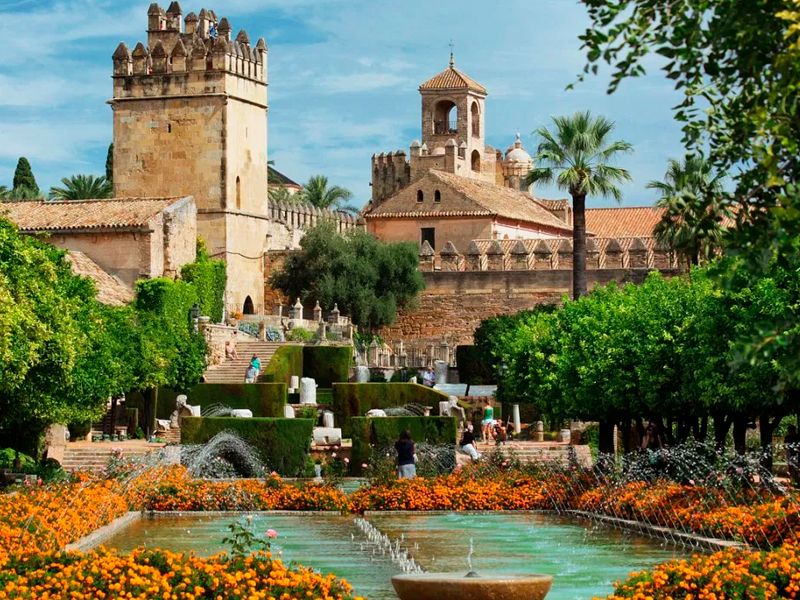
Córdoba was founded by the Romans during the second century BC, and it also became the capital of Hispania in times of the Roman Republic, as well as the Betica province during the Roman Empire. But its moment of splendour as a capital occurred during the Muslim domination of the Iberian Peninsula when it rose as the capital of the Emirate of Córdoba. A history that has also led it to become the city that houses the most titles of World Heritage Sites and thanks to authentic treasures that still live on today such as the Mosque-Cathedral of Córdoba, its historic centre, the Fiesta de Los Patios or the palatine city of Medina Azahara, among others.
Barcelona
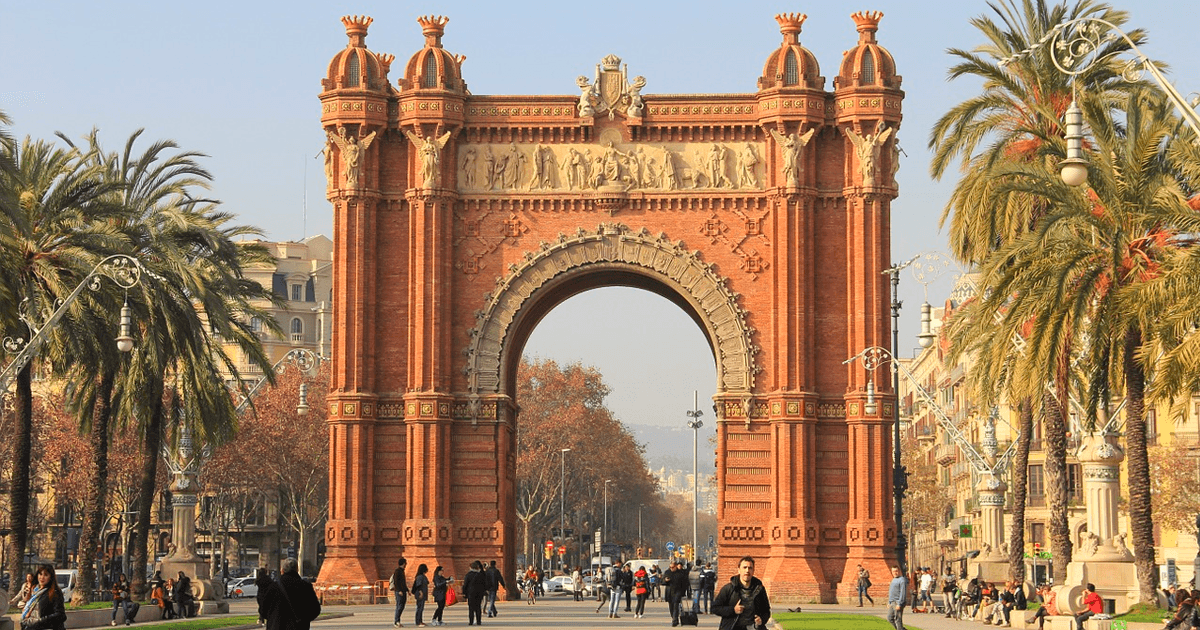
Barcelona was the first capital of Hispania Goda and it was reinstated several times specifically during the Visigothic period. Known at that time as Barcino, present-day Barcelona was a Roman city until the arrival of the Goths. Few remains from that Visigoth period are currently preserved in Barcelona, but most of what has been preserved can be seen in the archaeological basement of the Barcelona History Museum. Another important moment in the history of the city would be in 1937 when, in the middle of the Civil War, it was decided to move the headquarters of the Republican Government to Barcelona.
Cangas de Onís
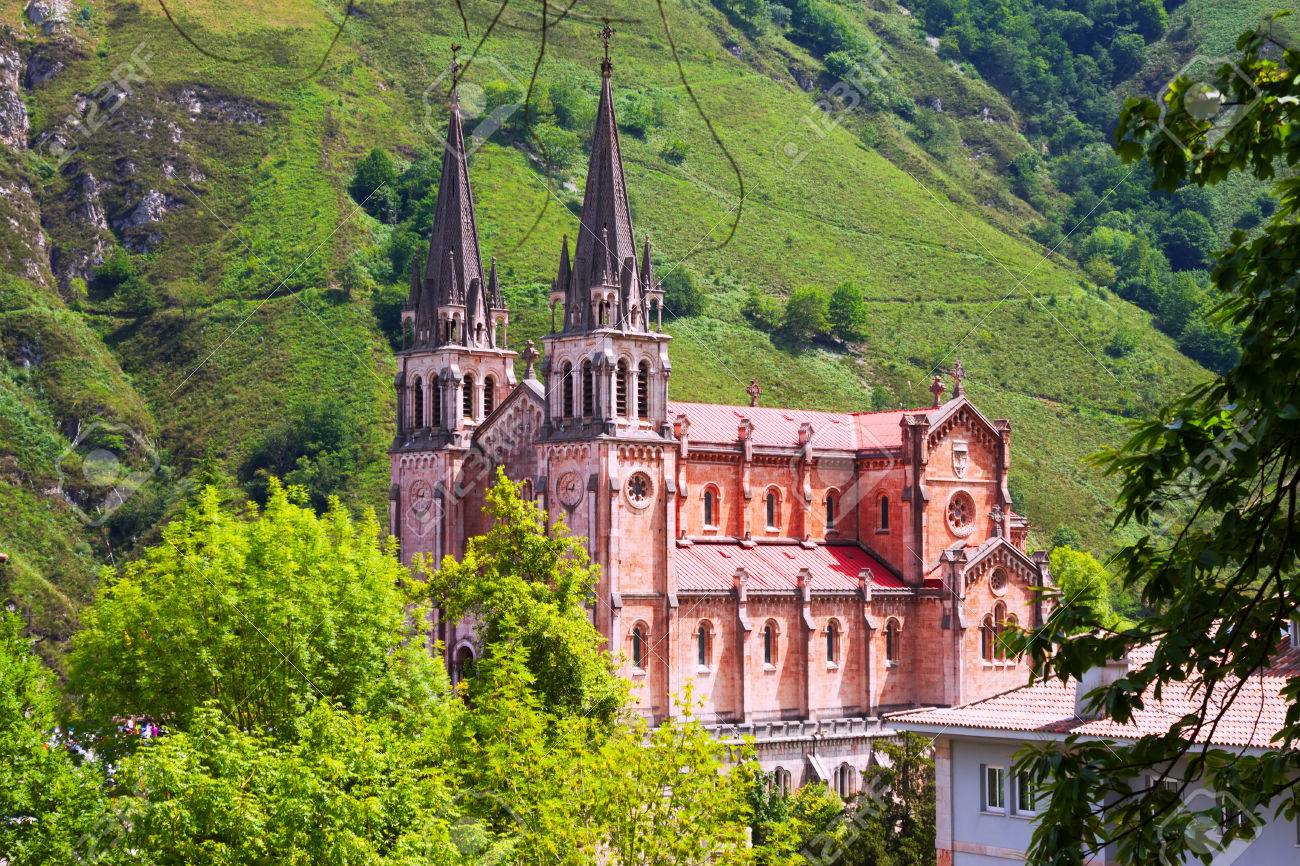
In addition to being known as one of the must-see visits if you travel to Asturias, as well as for the Covadonga Cave, the Basilica and the famous lakes of Covadonga, Cangas de Onís was the first capital of Asturias and according to Asturians, it was also the first capital of the Kingdom of Spain. It was precisely in Covadonga where Don Pelayo won the battle against Muslim troops in 722, thus initiating the Reconquest. In Cangas de Onís, Don Pelayo first established the capital of the Kingdom of Asturias and later that of Spain.
Toledo
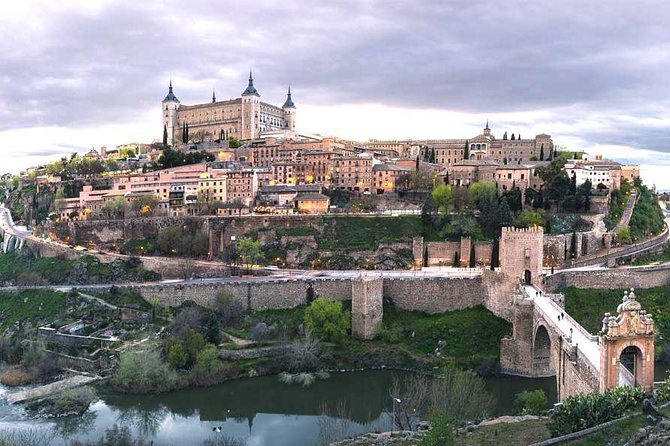
Toledo has had its role as capital in two moments in history. The first was in the year 567 when King Atanagildo decided to move the capital of the Spanish Visigothic Kingdom from Barcelona to Toledo. In this way, Toledo became the capital of the Kingdom of Spain. Hundreds of years later, between 1519 and 1561, Toledo once again became the capital of the Spanish empire with Carlos V, but they would finally end up in 1561 with the Cortes moving to Madrid.
Madrid
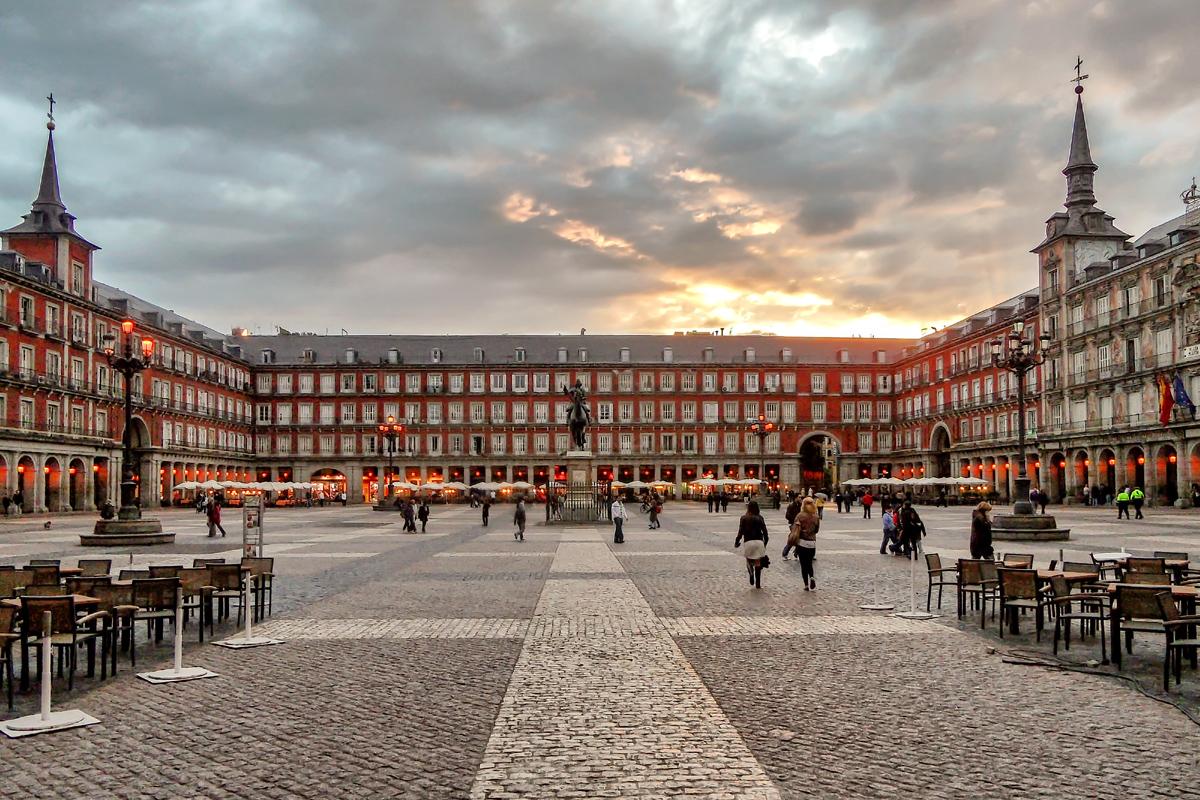
The history of Madrid as capital begins in May 1561 when Felipe II makes the decision to establish the Court permanently in this city. A decision that would forever change the history of the city, which at that time was just one more city in the kingdom. One of the main reasons associated with this decision is the geographical centrality of Madrid with respect to the rest of the peninsula, although this change has also been linked to political and love affairs on the part of Felipe II.
From this moment the accelerated growth of this city began, although it should be noted that between 1601 and 1939 the Cortes passed in different periods of time from Madrid to other cities such as Valladolid, Seville, Cádiz, Valencia or Burgos, the latter two, coinciding with the instability of the Spanish Civil War. It is finally in 1939 when the capital city returns permanently to Madrid.
Valladolid
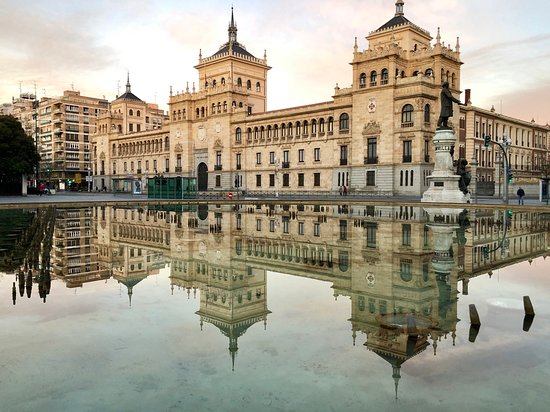
For the city of Valladolid, history took an unexpected turn in 1601 after the advisor of Felipe III, the Duke of Lerma, managed to transfer the Court of Madrid to Valladolid. An unexpected event that made Valladolid the capital of the Empire from 1601 to 1606. An event that also brought this city its moment of maximum splendour.
Seville
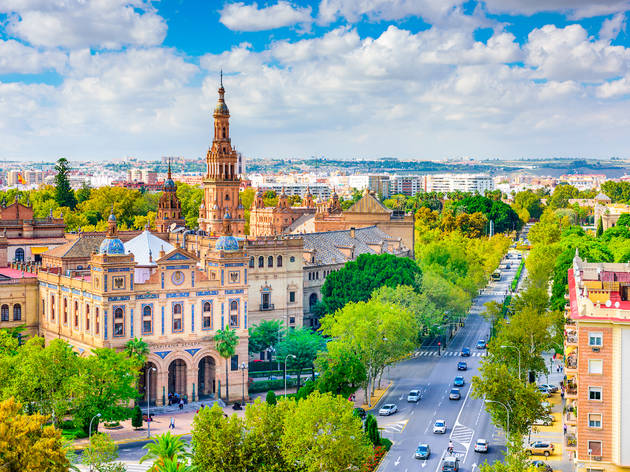
Seville was the capital of Spain specifically for two years and at the same time that the Napoleonic wars occurred (between 1808 and 1810). In those years, a large part of Spanish territory was invaded by Napoleon's troops and Seville was one of the places where they fought with the greatest force against these troops. It was specifically on December 16, 1808, when Count Floridablanca, president of the 'Junta Central', summoned the Junta to Seville, from which time Seville became the Spanish capital, the Real Alcázar being the headquarters of the 'Junta Central'. This came to an end in January 1810 when Seville finally surrendered to the French army.
Cadiz
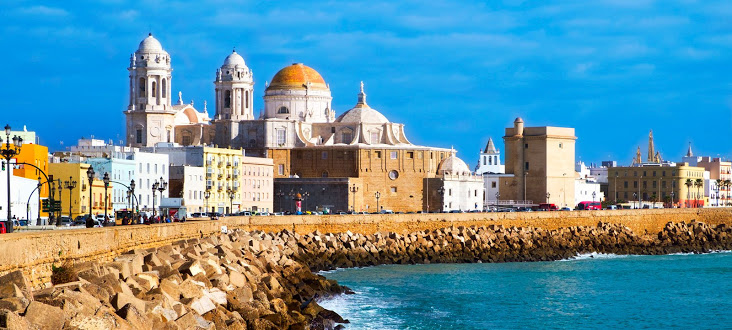
In addition to being the oldest city in Spain and also in Europe, its foundation being located eighty years after the Trojan War around the 13th century BC, Cádiz also became the capital of Spain after the transfer of the Cortes and after the handover of Seville to the French. Its period as capital city ran from 1810 to 1813 and it was in this city where the Spanish Constitution of 1812, La Pepa, was proclaimed.
Valencia
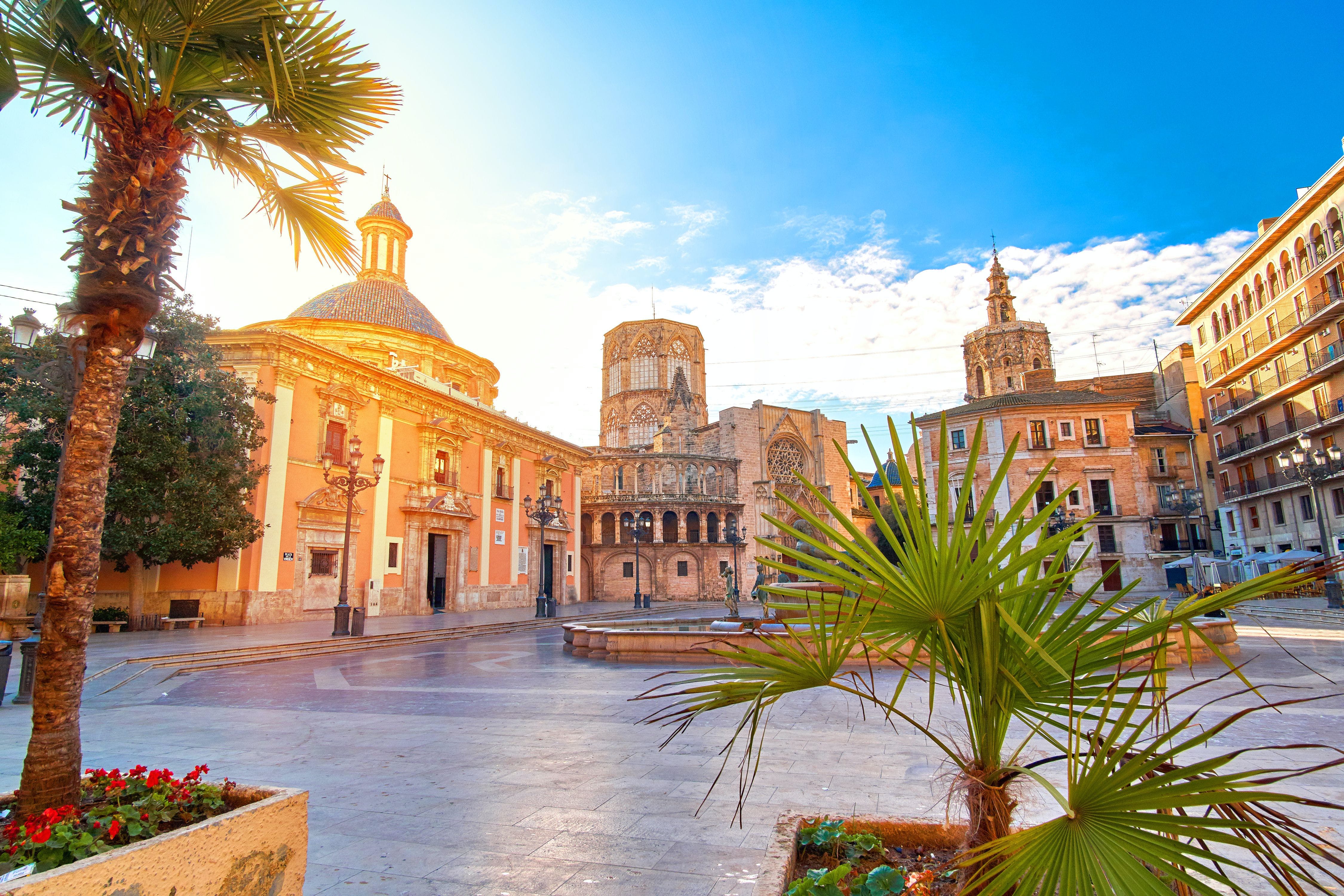
Valencia also experienced its time as the capital of Spain, something that occurred between November 1936 and October 1937, after the Council of Ministers made the decision to move the capital and due to the dangerous approach of Franco's troops to Madrid. A moment in history that corresponded to the Second Republic and in the midst of the Civil War. A new capital that happened from one day to the next. The current headquarters of the Cortes, the Palacio de Los Borja, was converted to the republican centre of operations.
Burgos
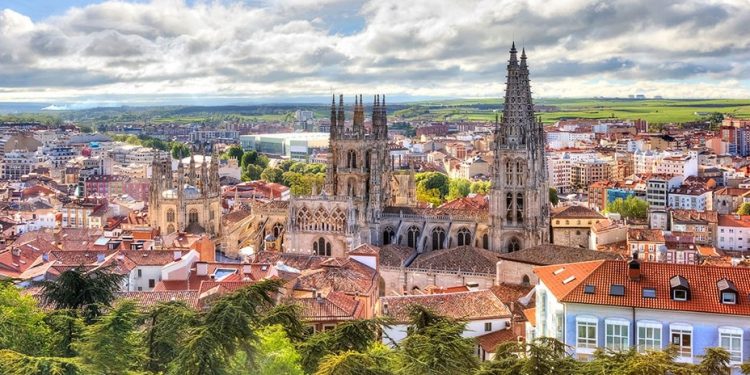
After the government of the Republic moved between 1936 and 1939 from Valencia, to Barcelona and Gerona and Figueras, finally, Burgos ended up holding the capital of Spain between April 1 and October 18, 1939, coinciding with the end of the Spanish Civil War. This resulted in Burgos becoming the capital of nationalist Spain after the coup against the Republic.
 2
Like
Published at 9:22 AM Comments (0)
2
Like
Published at 9:22 AM Comments (0)
Honouring Santa Eulalia
Friday, January 3, 2025
Every February, the streets of Barcelona come alive with a celebration deeply rooted in the city’s rich history and cultural fabric: the Festes de Santa Eulàlia. This vibrant festival honours Santa Eulalia, Barcelona’s co-patron saint, and reflects the distinct blend of reverence, tradition, and joyous festivity that characterizes the Catalan capital. This year it starts on February 12th.
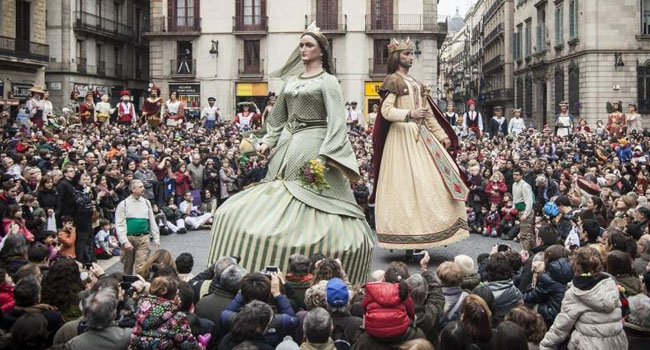
Santa Eulalia of Barcelona is revered as a martyr and is counted among the city’s most significant historical figures. According to tradition, Eulalia was a young, pious girl who lived during Roman times. At the tender age of 13, she publicly opposed the persecution of Christians ordered by Emperor Diocletian. Her defiance led to her arrest and subsequent martyrdom under gruesome circumstances, involving thirteen tortures, one for each year of her life. Her bravery and faith secured her a lasting place in the hearts of Barcelonians.
The Festes de Santa Eulàlia commence with a solemn yet spirited atmosphere. The festival begins with a solemn Mass held at the cathedral of Santa Eulalia, also known as La Seu. A grand parade follows, featuring the city’s iconic gegants (giants) and capgrossos (big-headed figures). Adorned in elaborate costumes, these giant figures parade through the city, captivating spectators with their towering presence and rhythmic dance.
One of the most breathtaking highlights of the festival is the display of castells. These human towers, constructed by agile teams called Castellers, symbolize collective effort and communal unity. Constructing a Castell involves a precise interplay of strength, balance, and teamwork, with young children often climbing to the very top. The sight of a Castell reaching skyward is both thrilling and deeply emblematic of Catalan culture.
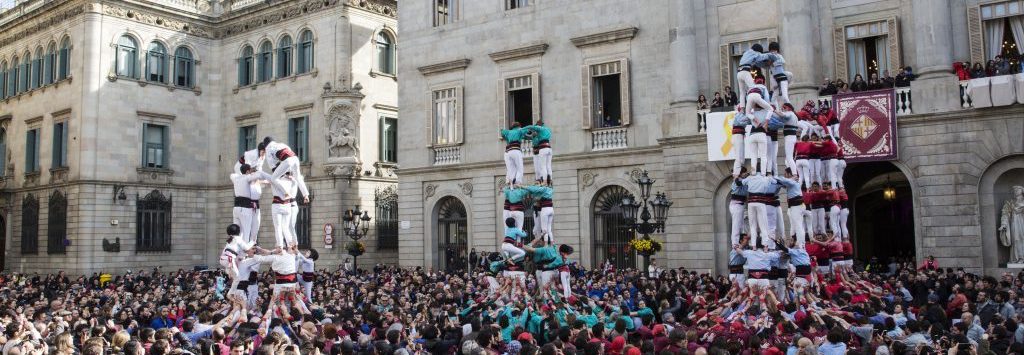
The Sardana, a traditional Catalan circle dance, forms another integral part of the Festes de Santa Eulàlia. Local dance groups gather in public squares, inviting residents and visitors alike to join in this communal dance. With hands linked, dancers perform intricate steps to the accompanying strains of cobla music, fostering a sense of community and shared heritage.
For those seeking a more adrenaline-fueled experience, the correfoc (fire run) provides an exhilarating spectacle. As night falls, costumed devils and mythical creatures take to the streets, wielding sparklers and fireworks. They charge through the crowd to the beat of drums, creating an electrifying atmosphere. Participants and onlookers alike are advised to wear protective clothing to fully enjoy this unique tradition safely.
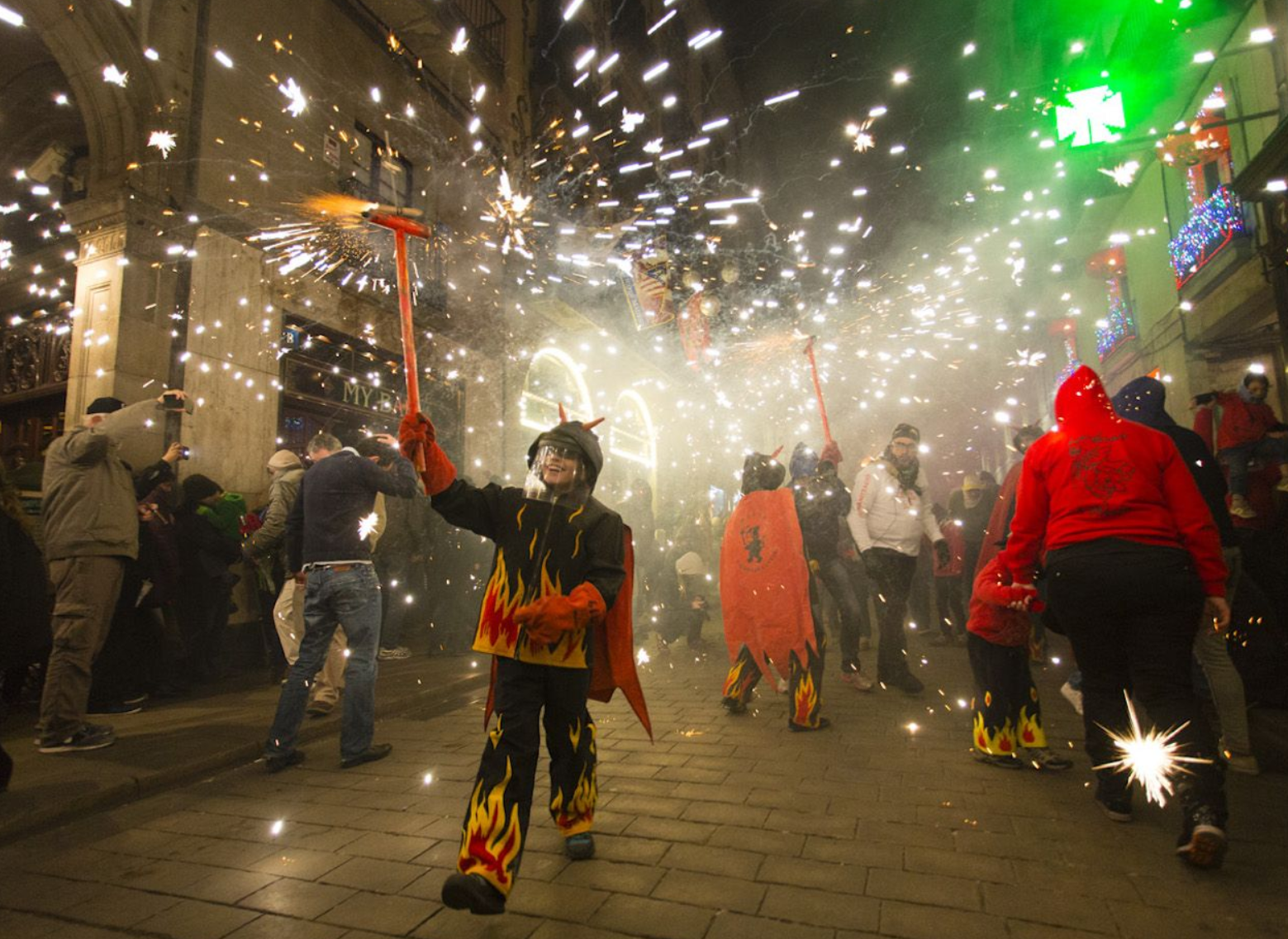
One of the more contemporary additions to the festival program is the stunning display of light and sound installations that decorate Barcelona’s buildings and public spaces. Iconic landmarks such as the Ajuntament (City Hall) and the Basilica of Santa Maria del Mar are transformed into canvases for brilliant projections, casting the city in a luminous, almost magical hue.
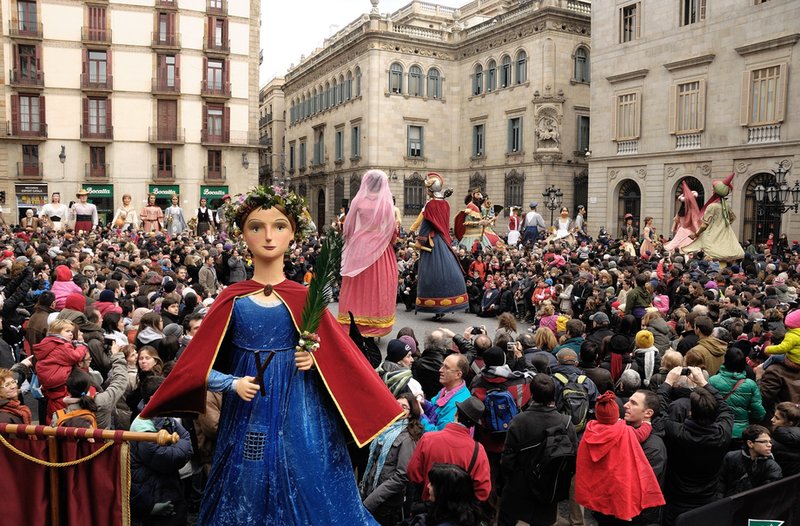
In keeping with the spirit of Santa Eulalia, who is often characterized as the patron saint of children, the festival also includes numerous activities designed for young ones. From storytelling sessions detailing the life of Santa Eulalia to workshops and craft activities, children play a central role in the celebrations, learning about their heritage in an engaging and festive environment.
While the Festes de Santa Eulàlia is deeply rooted in religious tradition, it serves a broader cultural and social purpose. It is a time for Barcelonians to come together, celebrate their heritage, and reaffirm their communal bonds. The festival also highlights the city’s commitment to preserving and promoting Catalan culture, ensuring that traditions are passed down through generations.
For visitors, the Festes de Santa Eulàlia offer a unique opportunity to experience both the historical and contemporary facets of Barcelona. The city’s streets, already famed for their architectural splendour and vibrant energy, take on an even more dynamic character during the festival. By participating in the events, sampling local culinary delights, and mingling with residents, visitors can gain a deeper understanding of the city’s rich cultural tapestry.
The Festes de Santa Eulàlia stand as a testament to Barcelona’s enduring spirit of celebration and cultural pride. Honouring the legacy of a young girl whose bravery left an indelible mark on the city’s history, the festival seamlessly blends ancient traditions with modern expressions of community. Whether through the majestic parades, the daring human towers, or the dazzling light displays, the festival offers a heartfelt celebration of Barcelona’s past and present. For locals and visitors alike, the Festes de Santa Eulàlia are a vibrant reminder of the city’s unique charm and its profound sense of identity.
 0
Like
Published at 9:08 AM Comments (1)
0
Like
Published at 9:08 AM Comments (1)
Spam post or Abuse? Please let us know
|
|